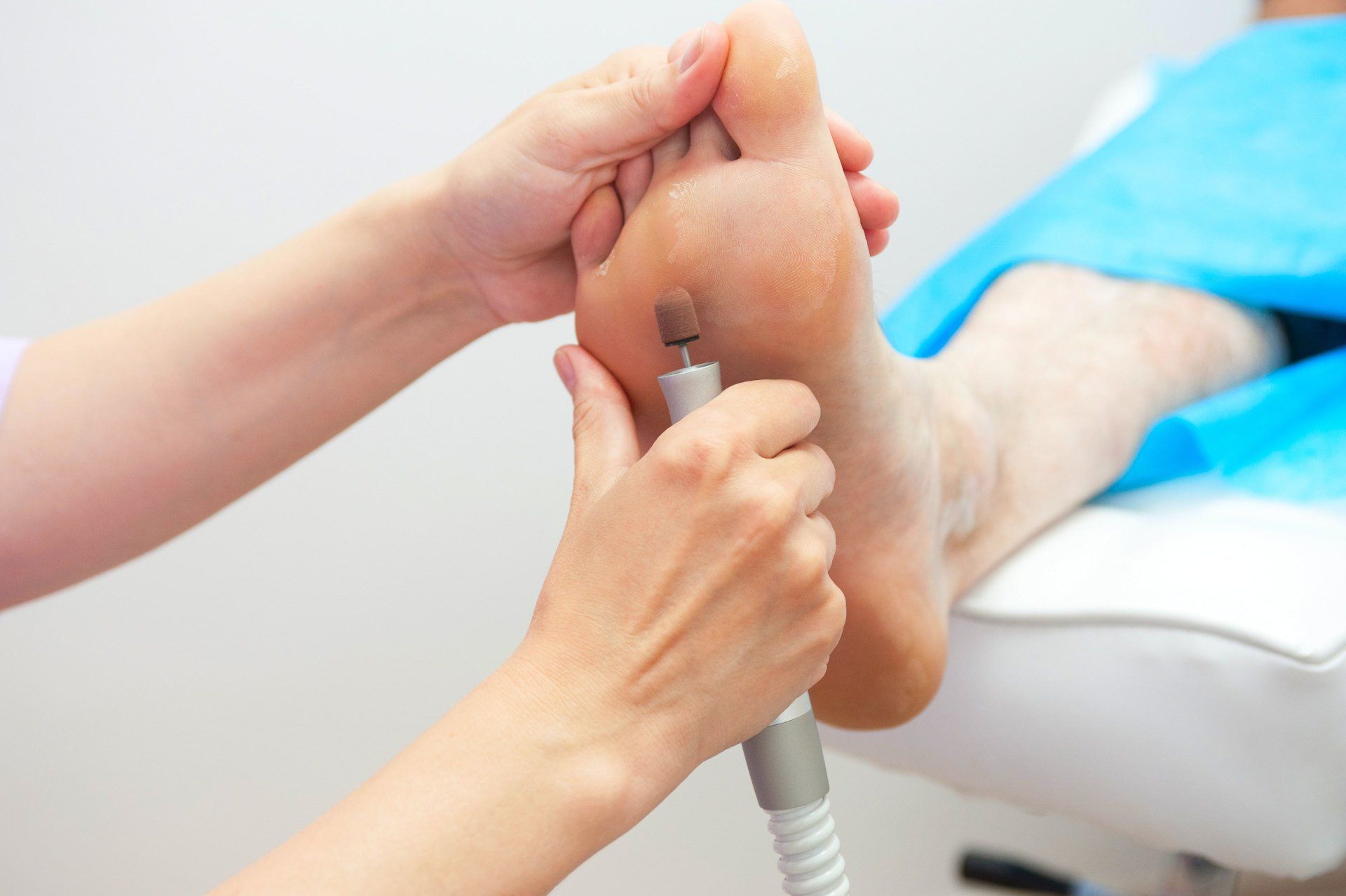"Your First Step To Healthy Feet"
At Snowdens Clinic & Beauty Room, we offer a range of foot treatments to help you manage your foot conditions.
Podiatrists are the experts in all aspects of foot and lower limb problems.
Foot Health Consultation £10*: What Is That Lump, Bump or Pain?15 minutes offering advice only, does not include treatment. The podiatrist may suggest a specific foot treatment or refer to an alternative medical practitioner.(*£10 redeemable against any podiatry, beauty treatment or products)
Did You know…
Most of us rarely do anything to take care of our feet, even though the average person walks over three million steps each year. Our podiatrists can assess your feet and offer a range of treatments, offering expert advice for all aspects of foot care.
Why Choose our Podiatrists?
We have a combined wealth of experience of over 30 years
We are renowned for our holistic care, attention and well being of your feet and lower limbs. We pride ourselves on transforming them by providing and an overhaul of the feet.
Your feet will left revitalised and glowing....Like walking on air!!!
Professional Medical Foot Treatments
Our aim is to treat any painful foot conditions with an emphatic gentle touch. We have a team of skilled and experienced podiatry specialists who can treat all types of foot problems efficiently. It's important to us that you remain mobile and active on your feet.
Comprehensive Foot care services
- Routine podiatry treatment
- Nail cutting service
- Diabetic foot care and education
- Ingrowing toenail treatments
- Yellow, fungal nail infection treatments
- Nail surgery packages
- Corns and callus removals
- Hard, thick and cracked heel treatments
- Pain in the foot or heel
For the discerning gentlemen clients, we offer relaxing male manicures and pedicures by one of our highly skilled beauty therapists
We Can also Help You With:
- Athlete's foot infections
- Thick, yellow fungal nails
- Plantar Fasciitis
- Verrucae (a variety of prescription only treatments available)
- Children's feet (podopaediatrics)
- Treatment for bunions, clawed or hammer toes
- Biomechanical assessments and gait analysis
- Orthotics using the latest 3 dimensional technology
- Foot mobilisation therapy (FMT). Suitable for Osteo-Arthritis and misaligned joints and tight ligaments and muscles in your feet. A gentle hands-on approach.
- Circulatory disorders
- Foot acupuncture
- Bunion prevention treatment
- Nail surgery - pain free permanent removal of part or whole nail
- A Variety of luxury podiatry treatments available
What is Podiatry?
A podiatrist (previously known as a Chiropodist) is a medical professional devoted to the treatment of disorders of the foot, ankle and lower limb. The name "Podiatrist" which originated in North America has now become the accepted term in the English-speaking world for practitioners of Podiatric Medicine. Registered with the Health & Care Professions Council (HCPC).
Podiatrists specialise in the diagnoses and treatment of the foot, ankle and lower extremity pathology resulting from bone and joint disorders, such as arthritis and soft-tissue and muscular pathologies as well as neurological and circulatory diseases. Podiatrists are also able to diagnose and treat any complications of the above, which affect the lower limb, including skin and nail disorder, corns, calluses and ingrown toenails. Foot injuries and infections gained through sport or other activities are also diagnosed and treated by podiatrists.
As with physicians many podiatrists will specialise:
- Sports medicine podiatry
- Gait analysis and Biomechanical podiatric specialist
- High risk wound care
- Podiatric rheumatology
- Neuro-podiatrist
- Podiatric Vascular specialist
- Dermatological podiatrist
- Gerontological podiatrist
- Podopaediatrics (study of children's foot and ankle conditions)
- Diabetic specialist podiatrist in limb salvage and wound care
- Forensic Podiatry (the study of foot prints, footwear shoeprints and feet associated with crime scene investigations)
- Consultant Podiatric Surgeon. (Some podiatrists will further specialise and train as reconstructive foot and ankle surgeons).
PODIATRIC TRAINING
In the UK, podiatrists usually undertake a 3-4 year undergraduate Bachelor of Science in Podiatry Medicine. Podiatric Surgeons have undertaken fellowships and postgraduate training. The scope of practice of a podiatrist falls into 4 key categories: General clinics, Biomechanics, High risk patient management and Surgery. They are qualified and licensed to administer local anaesthetics and some
prescription only medicines.
WHAT TO EXPECT WHEN YOU SEE A PODIATRIST
Maybe it's because the feet are the furthest body part from your eyes, but many foot conditions go unnoticed. By the time you experience symptoms, the problem is likely worse than you think and it's time to see a podiatrist. Here's what to expect on your first visit to a foot and ankle physician.
THOROUGH MEDICAL HISTORY
On your first visit, the podiatrist will obtain a thorough medical history to help identify possible areas of concern that may lead to or worsen foot and leg problems.
Be prepared with any important medical records and information on the following:
• Current medical problems, medications and allergies
• Past surgeries
• Any symptoms you are experiencing throughout your body
• Family history
• Current and previous health habits.
EXPERT EXAMINATION OF THE FOOT
The podiatrist will examine your foot and lower leg to check your blood, feeling, sensation and strength. They will identify any area of concern, including deformities such as bunion or hammer toes, muscle weakness and skin and nail changes.
TREATMENT AND PREVENTION RECOMMENDATIONS
Based on the thorough history and examination, the podiatrist will be able to make specific recommendations. Your treatment and prevention plan may include footwear, padding, inserts, physical therapy and wound or ulcer care. In some cases, referrals to other specialists are necessary. For example, you may need to see a vascular specialist if there is a concern regarding blood flow. Your foot and ankle physician will work with your primary care physician and other specialists if needed to ensure that everything is done to keep your feet and legs as healthy as possible, thus keeping you as active as possible.
The podiatrist may recommend other lifestyle changes that impact the health of your feet:
• Smoking cessation - Smoking can decrease blood flow to your legs and feet.
• Weight loss - Excessive weight can increase strain on your joints, including your feet and ankles.
• Walking - increased walking leads to increased circulation in the feet.
• Diabetes management - Carefully managing your disease through diet and exercise can help prevent many foot and ankle complications.
Podiatrists are specially trained to address your foot and ankle problems, no matter how small you think they are. The next time you notice something strange with your feet, don't hesitate to visit a foot and lower limb specialist.












